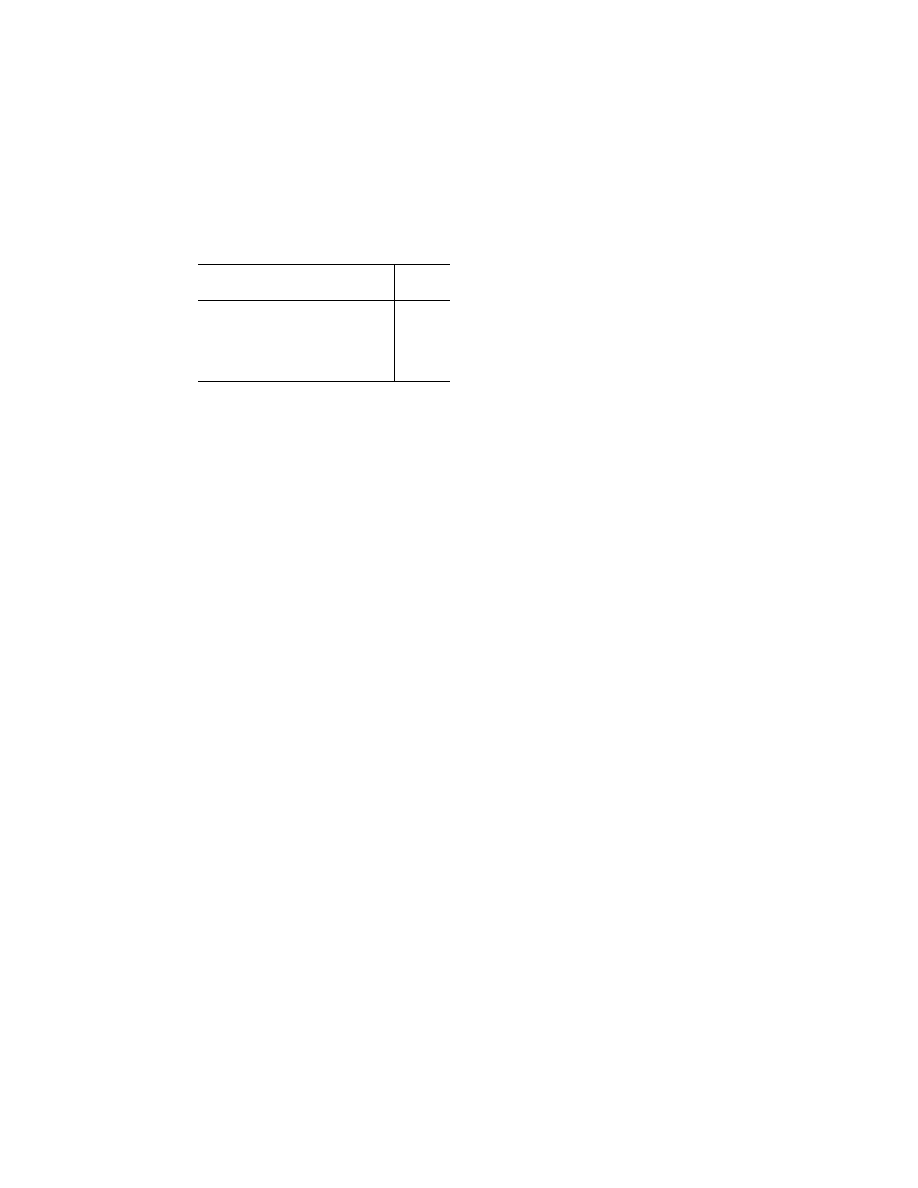
708
14 CFR Ch. I (1–1–24 Edition)
§ 91.173
VOR ground facility and maneuver the
aircraft directly over the point at a
reasonably low altitude; and
(iii) Note the VOR bearing indicated
by the receiver when over the ground
point (the maximum permissible vari-
ation between the published radial and
the indicated bearing is 6 degrees).
(c) If dual system VOR (units inde-
pendent of each other except for the
antenna) is installed in the aircraft,
the person checking the equipment
may check one system against the
other in place of the check procedures
specified in paragraph (b) of this sec-
tion. Both systems shall be tuned to
the same VOR ground facility and note
the indicated bearings to that station.
The maximum permissible variation
between the two indicated bearings is 4
degrees.
(d) Each person making the VOR
operational check, as specified in para-
graph (b) or (c) of this section, shall
enter the date, place, bearing error,
and sign the aircraft log or other
record. In addition, if a test signal ra-
diated by a repair station, as specified
in paragraph (b)(1) of this section, is
used, an entry must be made in the air-
craft log or other record by the repair
station certificate holder or the certifi-
cate holder’s representative certifying
to the bearing transmitted by the re-
pair station for the check and the date
of transmission.
(Approved by the Office of Management and
Budget under control number 2120–0005)
§ 91.173
ATC clearance and flight plan
required.
No person may operate an aircraft in
controlled airspace under IFR unless
that person has—
(a) Filed an IFR flight plan; and
(b) Received an appropriate ATC
clearance.
§ 91.175
Takeoff and landing under
IFR.
(a)
Instrument approaches to civil air-
ports. Unless otherwise authorized by
the FAA, when it is necessary to use an
instrument approach to a civil airport,
each person operating an aircraft must
use a standard instrument approach
procedure prescribed in part 97 of this
chapter for that airport. This para-
graph does not apply to United States
military aircraft.
(b)
Authorized DA/DH or MDA. For the
purpose of this section, when the ap-
proach procedure being used provides
for and requires the use of a DA/DH or
MDA, the authorized DA/DH or MDA is
the highest of the following:
(1) The DA/DH or MDA prescribed by
the approach procedure.
(2) The DA/DH or MDA prescribed for
the pilot in command.
(3) The DA/DH or MDA appropriate
for the aircraft equipment available
and used during the approach.
(c)
Operation below DA/DH or MDA.
Except as provided in § 91.176 of this
chapter, where a DA/DH or MDA is ap-
plicable, no pilot may operate an air-
craft, except a military aircraft of the
United States, below the authorized
MDA or continue an approach below
the authorized DA/DH unless—
(1) The aircraft is continuously in a
position from which a descent to a
landing on the intended runway can be
made at a normal rate of descent using
normal maneuvers, and for operations
conducted under part 121 or part 135 un-
less that descent rate will allow touch-
down to occur within the touchdown
zone of the runway of intended landing;
(2) The flight visibility is not less
than the visibility prescribed in the
standard instrument approach being
used; and
(3) Except for a Category II or Cat-
egory III approach where any necessary
visual reference requirements are spec-
ified by the Administrator, at least one
of the following visual references for
the intended runway is distinctly visi-
ble and identifiable to the pilot:
(i) The approach light system, except
that the pilot may not descend below
100 feet above the touchdown zone ele-
vation using the approach lights as a
reference unless the red terminating
bars or the red side row bars are also
distinctly visible and identifiable.
(ii) The threshold.
(iii) The threshold markings.
(iv) The threshold lights.
(v) The runway end identifier lights.
(vi) The visual glideslope indicator.
(vii) The touchdown zone or touch-
down zone markings.
(viii) The touchdown zone lights.
(ix) The runway or runway markings.
VerDate Sep<11>2014
14:00 Mar 14, 2024
Jkt 262047
PO 00000
Frm 00718
Fmt 8010
Sfmt 8010
Q:\14\14V2.TXT
PC31
aworley on LAPBH6H6L3 with DISTILLER

709
Federal Aviation Administration, DOT
§ 91.175
(x) The runway lights.
(d)
Landing. No pilot operating an
aircraft, except a military aircraft of
the United States, may land that air-
craft when—
(1) For operations conducted under
§ 91.176 of this part, the requirements of
paragraphs (a)(3)(iii) or (b)(3)(iii), as
applicable, of that section are not met;
or
(2) For all other operations under
this part and parts 121, 125, 129, and 135,
the flight visibility is less than the vis-
ibility prescribed in the standard in-
strument approach procedure being
used.
(e)
Missed approach procedures. Each
pilot operating an aircraft, except a
military aircraft of the United States,
shall immediately execute an appro-
priate missed approach procedure when
either of the following conditions exist:
(1) Whenever operating an aircraft
pursuant to paragraph (c) of this sec-
tion or § 91.176 of this part, and the re-
quirements of that paragraph or sec-
tion are not met at either of the fol-
lowing times:
(i) When the aircraft is being oper-
ated below MDA; or
(ii) Upon arrival at the missed ap-
proach point, including a DA/DH where
a DA/DH is specified and its use is re-
quired, and at any time after that until
touchdown.
(2) Whenever an identifiable part of
the airport is not distinctly visible to
the pilot during a circling maneuver at
or above MDA, unless the inability to
see an identifiable part of the airport
results only from a normal bank of the
aircraft during the circling approach.
(f)
Civil airport takeoff minimums. This
paragraph applies to persons operating
an aircraft under part 121, 125, 129, or
135 of this chapter.
(1) Unless otherwise authorized by
the FAA, no pilot may takeoff from a
civil airport under IFR unless the
weather conditions at time of takeoff
are at or above the weather minimums
for IFR takeoff prescribed for that air-
port under part 97 of this chapter.
(2) If takeoff weather minimums are
not prescribed under part 97 of this
chapter for a particular airport, the
following weather minimums apply to
takeoffs under IFR:
(i) For aircraft, other than heli-
copters, having two engines or less—1
statute mile visibility.
(ii) For aircraft having more than
two engines—
1
⁄
2
statute mile visibility.
(iii) For helicopters—
1
⁄
2
statute mile
visibility.
(3) Except as provided in paragraph
(f)(4) of this section, no pilot may take-
off under IFR from a civil airport hav-
ing published obstacle departure proce-
dures (ODPs) under part 97 of this
chapter for the takeoff runway to be
used, unless the pilot uses such ODPs
or an alternative procedure or route as-
signed by air traffic control.
(4) Notwithstanding the requirements
of paragraph (f)(3) of this section, no
pilot may takeoff from an airport
under IFR unless:
(i) For part 121 and part 135 opera-
tors, the pilot uses a takeoff obstacle
clearance or avoidance procedure that
ensures compliance with the applicable
airplane performance operating limita-
tions requirements under part 121, sub-
part I or part 135, subpart I for takeoff
at that airport; or
(ii) For part 129 operators, the pilot
uses a takeoff obstacle clearance or
avoidance procedure that ensures com-
pliance with the airplane performance
operating limitations prescribed by the
State of the operator for takeoff at
that airport.
(g)
Military airports. Unless otherwise
prescribed by the Administrator, each
person operating a civil aircraft under
IFR into or out of a military airport
shall comply with the instrument ap-
proach procedures and the takeoff and
landing minimum prescribed by the
military authority having jurisdiction
of that airport.
(h)
Comparable values of RVR and
ground visibility. (1) Except for Category
II or Category III minimums, if RVR
minimums for takeoff or landing are
prescribed in an instrument approach
procedure, but RVR is not reported for
the runway of intended operation, the
RVR minimum shall be converted to
ground visibility in accordance with
the table in paragraph (h)(2) of this sec-
tion and shall be the visibility min-
imum for takeoff or landing on that
runway.
(2)
VerDate Sep<11>2014
14:00 Mar 14, 2024
Jkt 262047
PO 00000
Frm 00719
Fmt 8010
Sfmt 8010
Q:\14\14V2.TXT
PC31
aworley on LAPBH6H6L3 with DISTILLER

710
14 CFR Ch. I (1–1–24 Edition)
§ 91.176
RVR (feet)
Visibility
(statute
miles)
1,600 ..................................................................
1
⁄
4
2,400 ..................................................................
1
⁄
2
3,200 ..................................................................
5
⁄
8
4,000 ..................................................................
3
⁄
4
4,500 ..................................................................
7
⁄
8
5,000 ..................................................................
1
6,000 ..................................................................
1
1
⁄
4
(i)
Operations on unpublished routes
and use of radar in instrument approach
procedures. When radar is approved at
certain locations for ATC purposes, it
may be used not only for surveillance
and precision radar approaches, as ap-
plicable, but also may be used in con-
junction with instrument approach
procedures predicated on other types of
radio navigational aids. Radar vectors
may be authorized to provide course
guidance through the segments of an
approach to the final course or fix.
When operating on an unpublished
route or while being radar vectored,
the pilot, when an approach clearance
is received, shall, in addition to com-
plying with § 91.177, maintain the last
altitude assigned to that pilot until the
aircraft is established on a segment of
a published route or instrument ap-
proach procedure unless a different al-
titude is assigned by ATC. After the
aircraft is so established, published al-
titudes apply to descent within each
succeeding route or approach segment
unless a different altitude is assigned
by ATC. Upon reaching the final ap-
proach course or fix, the pilot may ei-
ther complete the instrument approach
in accordance with a procedure ap-
proved for the facility or continue a
surveillance or precision radar ap-
proach to a landing.
(j)
Limitation on procedure turns. In
the case of a radar vector to a final ap-
proach course or fix, a timed approach
from a holding fix, or an approach for
which the procedure specifies ‘‘No PT,’’
no pilot may make a procedure turn
unless cleared to do so by ATC.
(k)
ILS components. The basic compo-
nents of an ILS are the localizer, glide
slope, and outer marker, and, when in-
stalled for use with Category II or Cat-
egory III instrument approach proce-
dures, an inner marker. The following
means may be used to substitute for
the outer marker: Compass locator;
precision approach radar (PAR) or air-
port surveillance radar (ASR); DME,
VOR, or nondirectional beacon fixes
authorized in the standard instrument
approach procedure; or a suitable
RNAV system in conjunction with a fix
identified in the standard instrument
approach procedure. Applicability of,
and substitution for, the inner marker
for a Category II or III approach is de-
termined by the appropriate 14 CFR
part 97 approach procedure, letter of
authorization, or operations specifica-
tions issued to an operator.
[Doc. No. 18334, 54 FR 34294, Aug. 18, 1989, as
amended by Amdt. 91–267, 66 FR 21066, Apr.
27, 2001; Amdt. 91–281, 69 FR 1640, Jan. 9, 2004;
Amdt. 91–296, 72 FR 31678, June 7, 2007; Amdt.
91–306, 74 FR 20205, May 1, 2009; Docket FAA–
2013–0485, Amdt. 91–345, 81 FR 90172, Dec. 13,
2016; Amdt. 91–345B, 83 FR 10568, Mar. 12, 2018]
§ 91.176
Straight-in landing operations
below DA/DH or MDA using an en-
hanced flight vision system (EFVS)
under IFR.
(a)
EFVS operations to touchdown and
rollout. Unless otherwise authorized by
the Administrator to use an MDA as a
DA/DH with vertical navigation on an
instrument approach procedure, or un-
less paragraph (d) of this section ap-
plies, no person may conduct an EFVS
operation in an aircraft, except a mili-
tary aircraft of the United States, at
any airport below the authorized DA/
DH to touchdown and rollout unless
the minimums used for the particular
approach procedure being flown include
a DA or DH, and the following require-
ments are met:
(1)
Equipment. (i) The aircraft must
be equipped with an operable EFVS
that meets the applicable airworthi-
ness requirements. The EFVS must:
(A) Have an electronic means to pro-
vide a display of the forward external
scene topography (the applicable nat-
ural or manmade features of a place or
region especially in a way to show
their relative positions and elevation)
through the use of imaging sensors, in-
cluding but not limited to forward-
looking infrared, millimeter wave
radiometry, millimeter wave radar, or
low-light level image intensification.
(B) Present EFVS sensor imagery,
aircraft flight information, and flight
symbology on a head up display, or an
equivalent display, so that the im-
agery, information and symbology are
VerDate Sep<11>2014
14:00 Mar 14, 2024
Jkt 262047
PO 00000
Frm 00720
Fmt 8010
Sfmt 8010
Q:\14\14V2.TXT
PC31
aworley on LAPBH6H6L3 with DISTILLER


